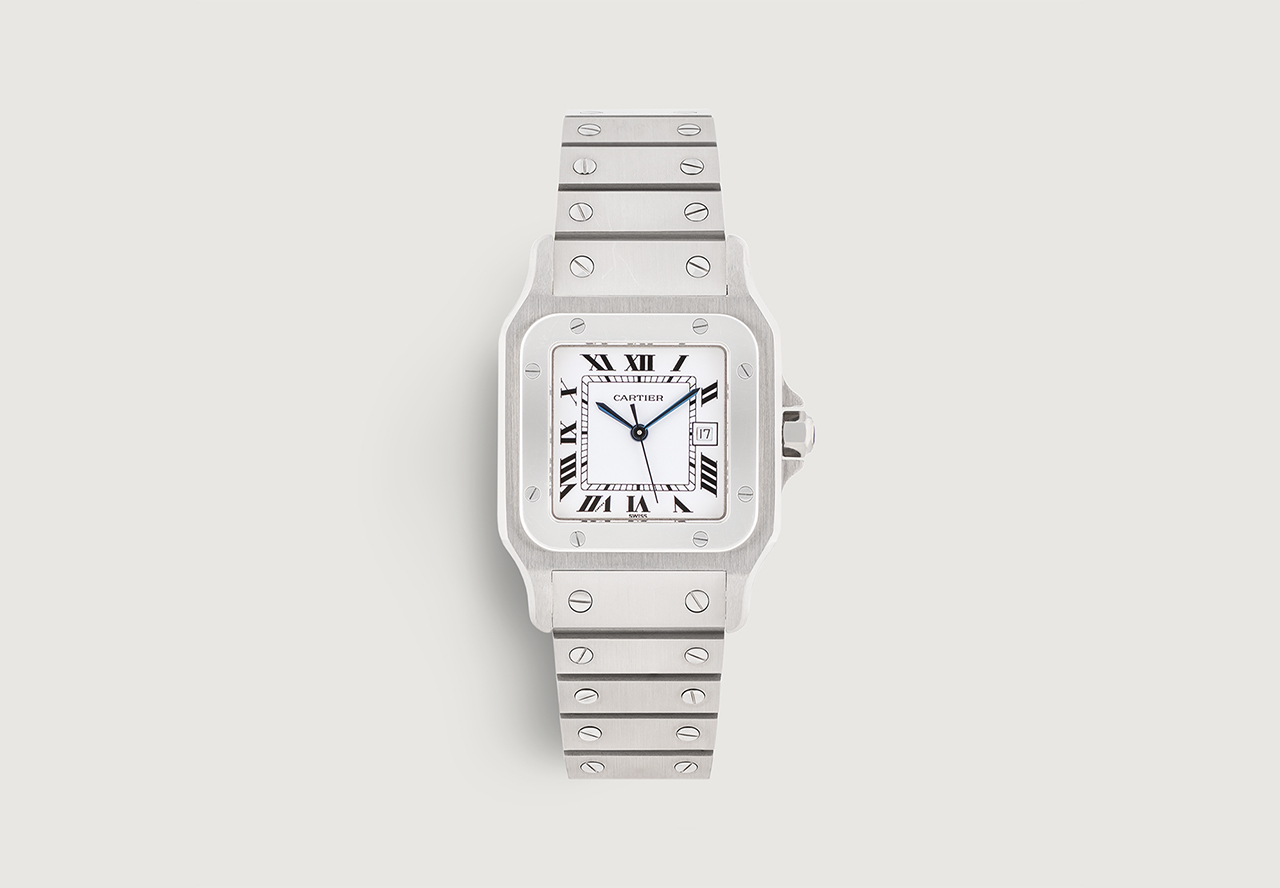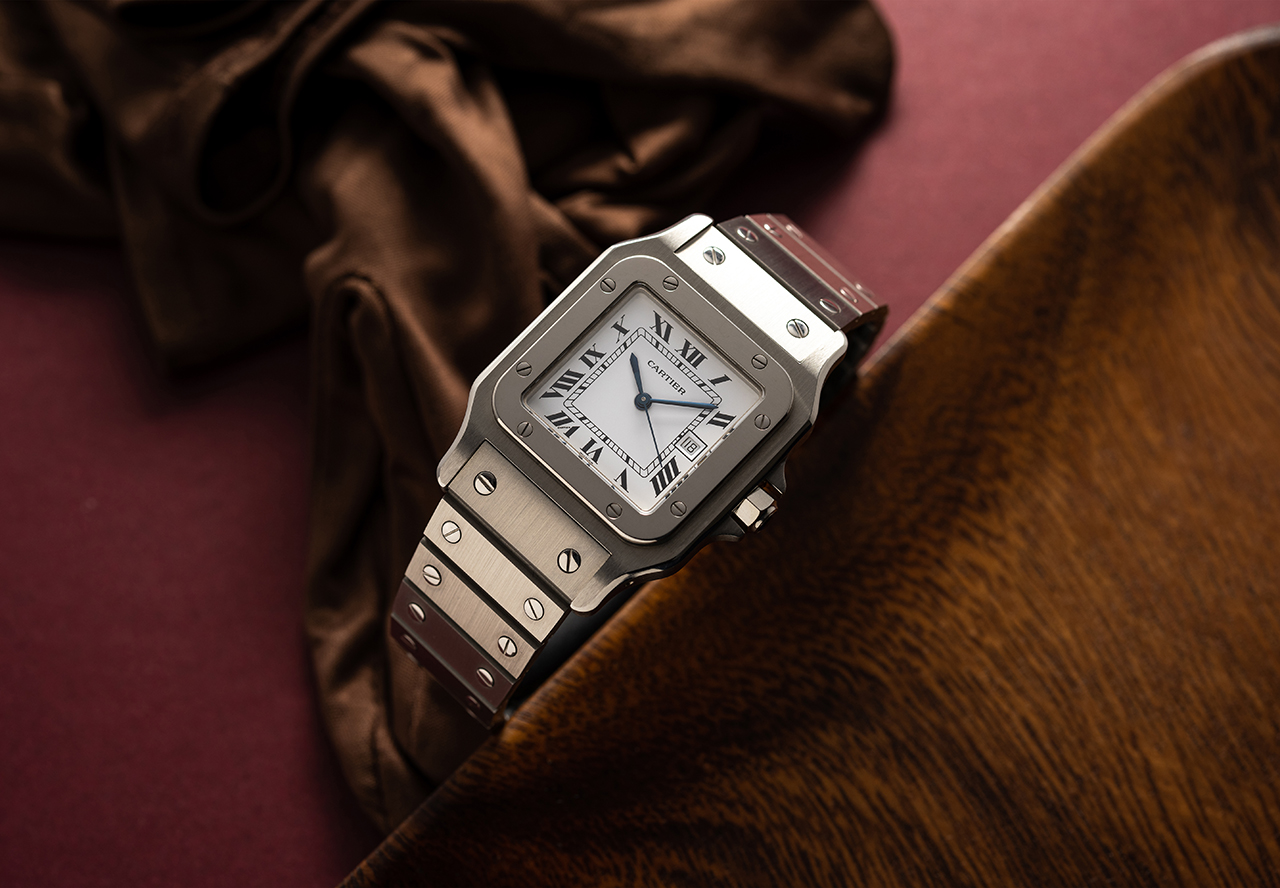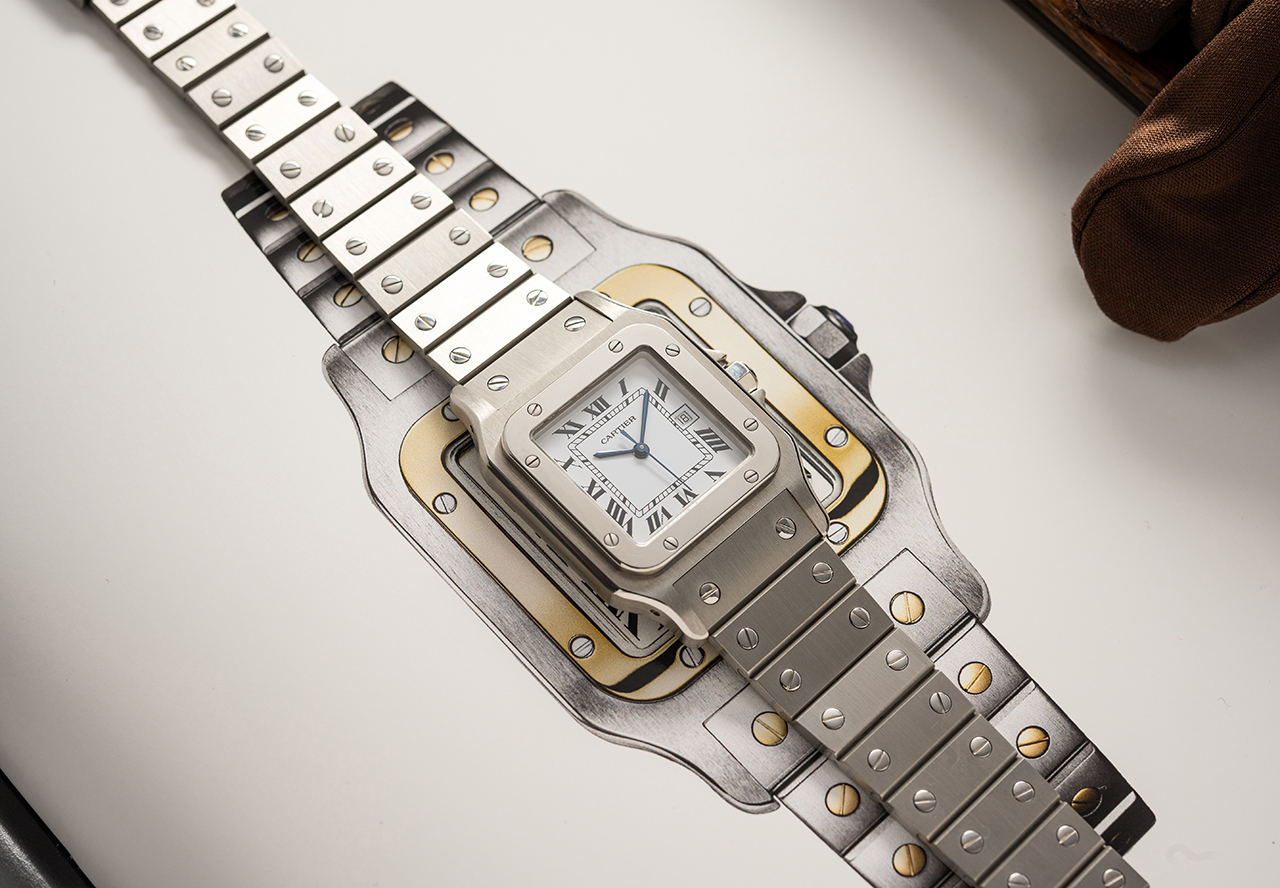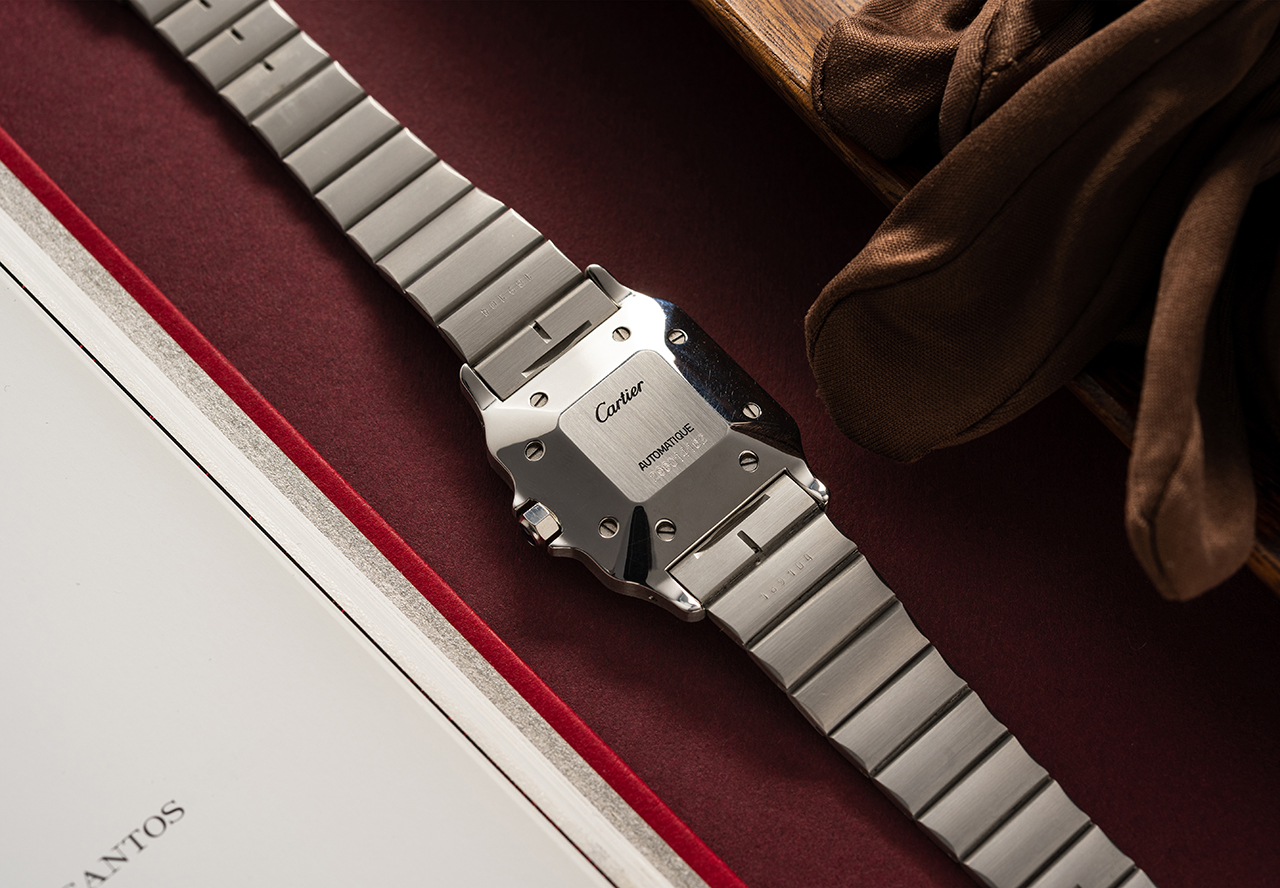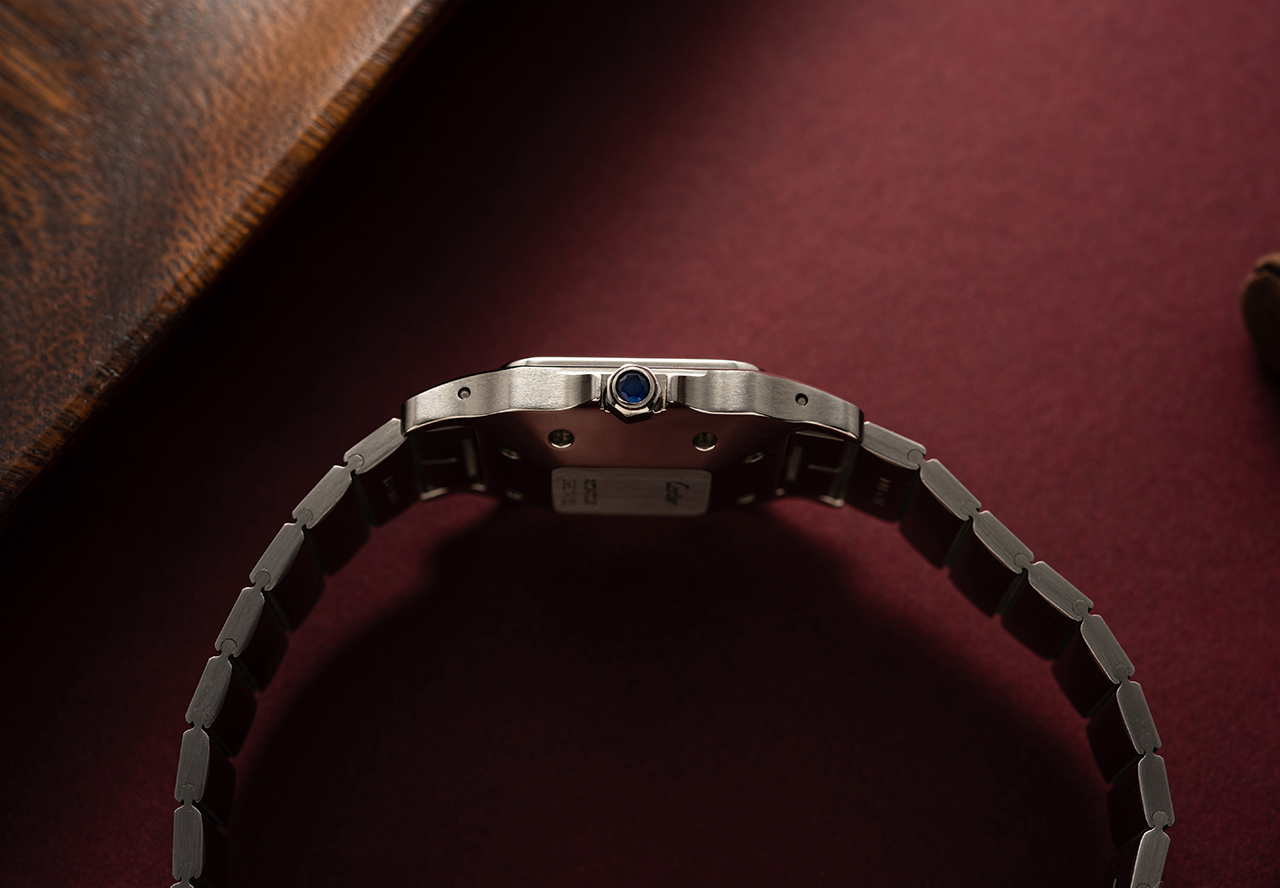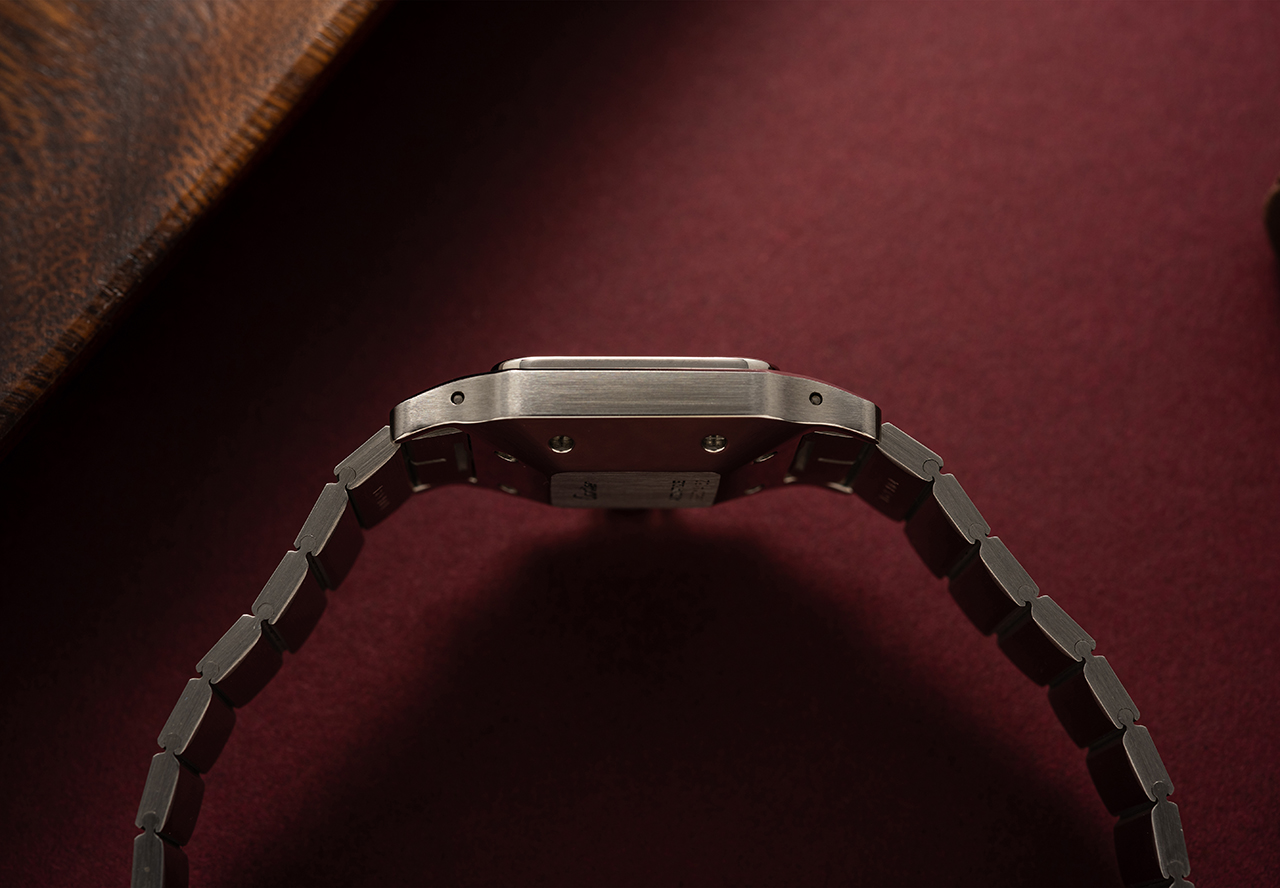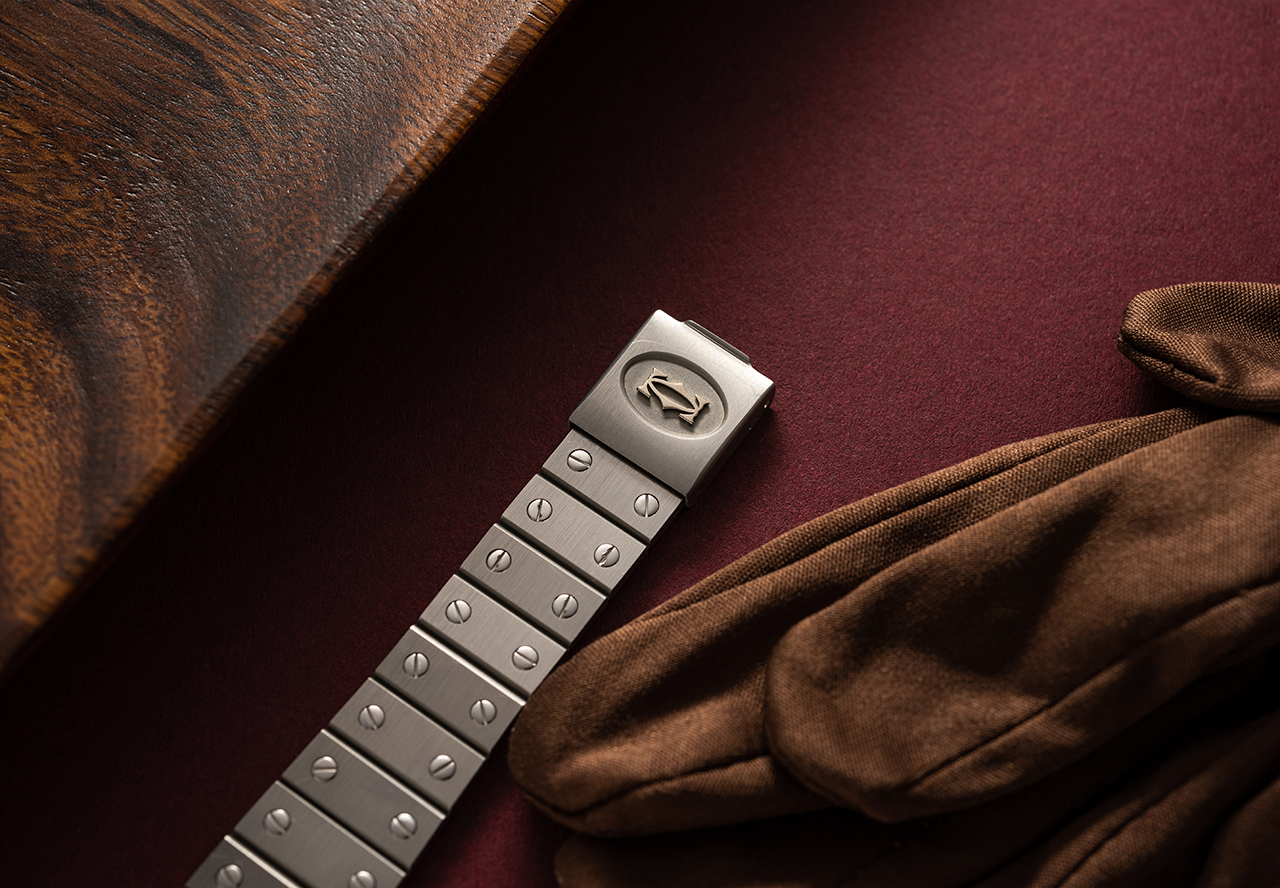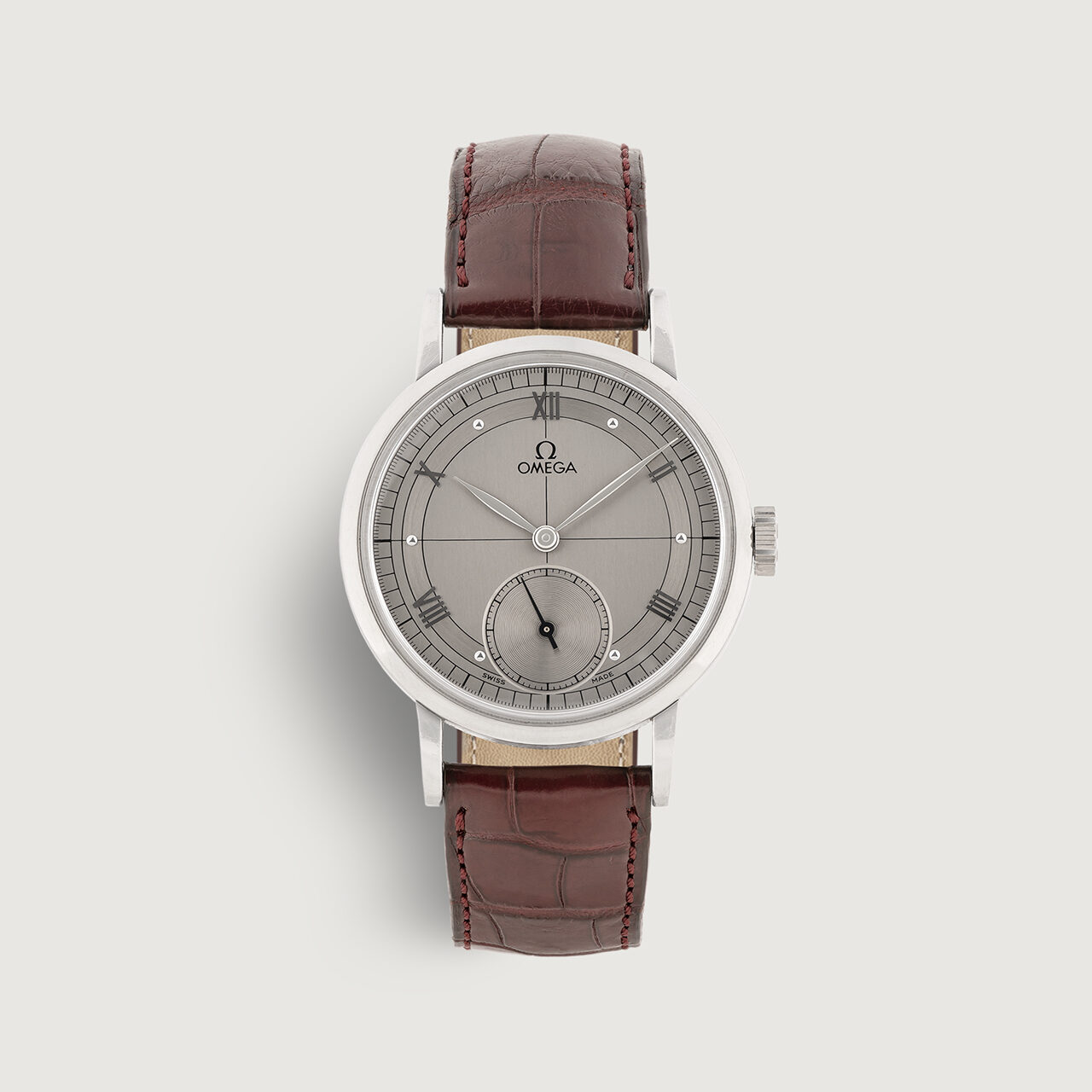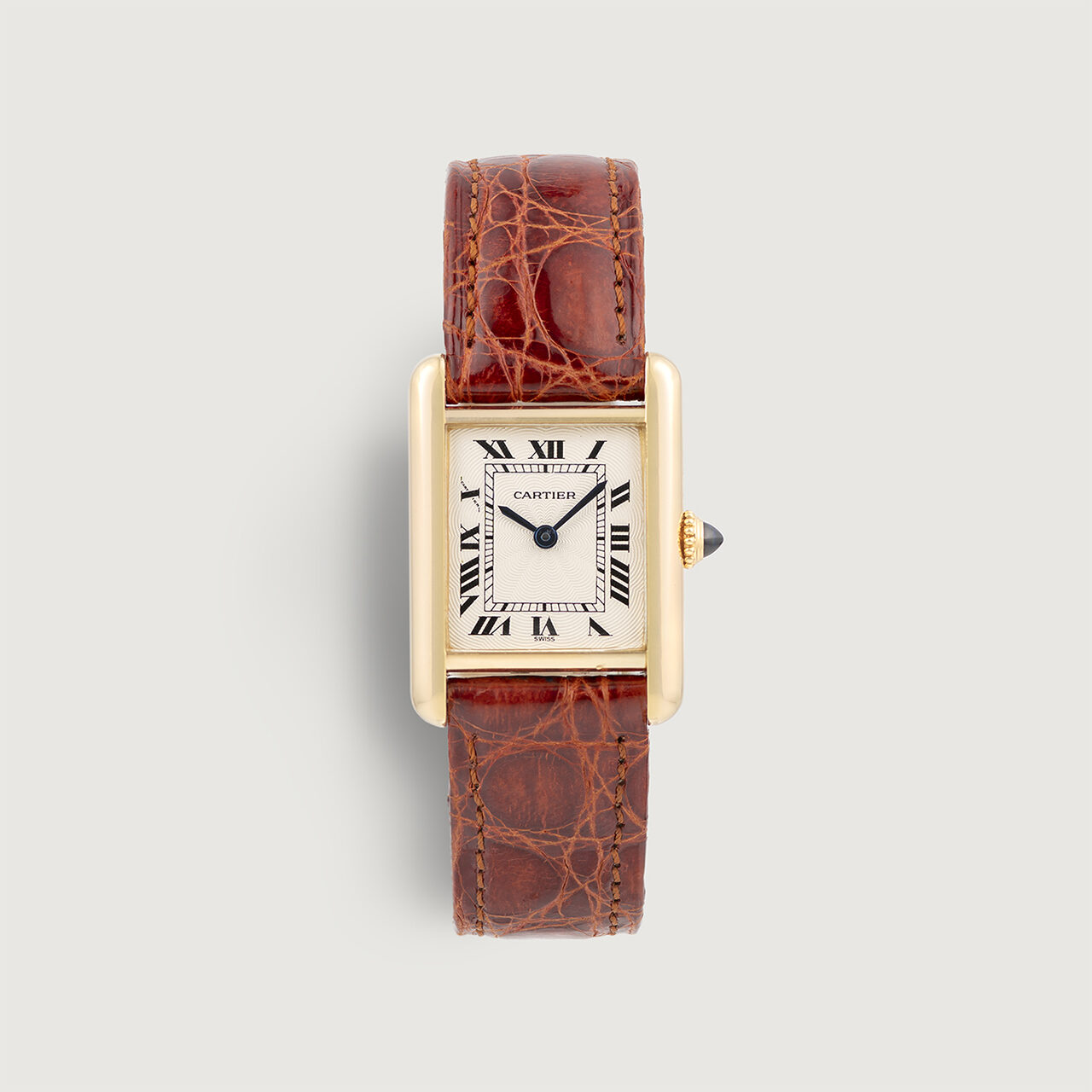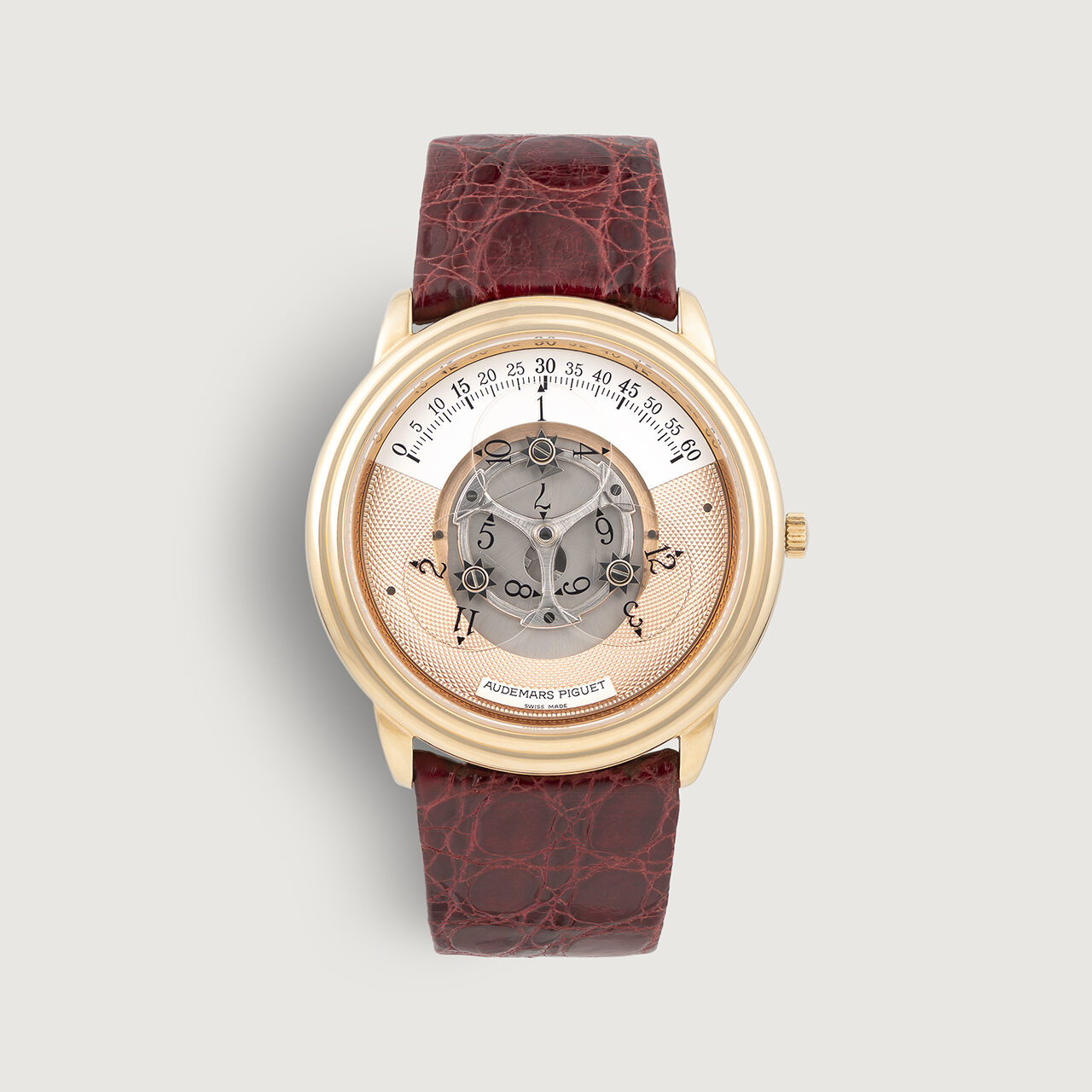Cartier Santos Carrée 2960 Automatique
SOLD
Out of stock
DETAILS
The Cartier Santos origins date back to 1904 when Louis Cartier created a watch for his good friend, a Brazilian aviator by the name of Alberto Santos-Dumont. This example we have on offer is from the 1990s and is the Santos Carrée model which was hugely successful from the 1980s onwards. This neo-vintage classic has become increasingly sought-after among today’s collectors. The case width of 29mm means that it wears elegantly on the wrist compared to the newer models, and features an automatic movement with date.
Overall this example is in excellent original condition.
| LOCATION | London – UK |
|---|---|
| BRAND | Cartier |
| MODEL | Santos Carrée |
| YEAR | 1990s |
| REFERENCE | 2960 |
| MATERIAL | Stainless Steel |
| MOVEMENT | Automatic |
| CASE DIAMETER | 29mm |
| BRACELET/STRAP | Original Santos Bracelet |
| BOX/PAPERWORK | Watches of Knightsbridge |
STORY BEHIND
Cartier History
Founded in 1847 by Louis-François Cartier after taking over the Parisian-based workshop of his mentor, Adolphe Picard, Cartier has grown from a relatively tiny family business into one of the world’s largest household-name jewellers. While the brand’s success has been immense, it is better attributed to Louis-François’ sons, Louis, Pierre and Jacques, who took charge of the brand in various regions. Louis led the Paris workshop while Pierre went stateside and opened a workshop in NYC in 1909. Just eight years later, in 1917, Pierre opened the iconic 653 Fifth Avenue location, which Cartier still finds itself in to this day.
While the brand’s popularity was originally attributed to their jewellery, the development of their wristwatch business drove the jeweller to new heights. In 1904, Cartier’s first men’s wristwatch, the Cartier Santos, was born when famed aviator Alberto Santos-Dumont told Louis Cartier about the impracticalities of using a pocket watch during flight. Seeing a solution to the problem, Louis designed the Cartier Santos as a wrist-mounted timepiece with a square case, angular bezel and manually-wound movement. In 1907 the brand entered into an agreement with Edmond Jaeger to supply movements to the brand, and from then on, the brand’s reputation was equally rooted in their watches as it was their jewellery. Following the Santos, Cartier released watches like the Tank, the Tortue and several other iconic watches.
Throughout their history, Cartier have developed an incredibly strong reputation as a revered watchmaker thanks to their partnerships with esteemed watchmakers like Edmond Jaeger (who would later enter into a partnership with LeCoultre leading to the Jaeger LeCoultre brands as we know today) and brands like Vacheron Constantin and Audemars Piguet.
While their reputation waned in the 80s and 90s as they turned to jewellery-oriented quartz timepieces, they made a conscious effort to turn things around in the late 90s with a programme that became the birthplace of some of their most sought-after modern watches.
Quartz Crisis and Richemont Acquisition
With the Quartz Crisis taking an unprecedented toll on the watchmaking industry in the 1970s and 1980s, brands had to think outside of the box in order to remain financially viable. Luckily for Cartier, they had just branched into lighters following a proposal from a lighter-manufacturer in the late 60s to sell Cartier-branded lighters under license. Such was the success that Cartier branched out in the early 1970s and began to sell perfumes, scarves and other accessories under the sub-brand called “Must de Cartier.”
In 1976 with the Quartz Crisis taking its toll on the brand’s watch sales, they developed the Must de Cartier Tank – a quartz-powered timepiece that fit into this complimentary collection and began to drive sales once again thanks to its lower price. It was around this time when Cartier was able to reacquire the London and New York sides of the business after being sold off due to German-occupied France being cut off from England and the US. They also began to cancel the licences for their branded products. Instead, they took everything in-house and sold the products themselves under the Must de Cartier brand.
Following the death of Robert Hocq in 1979, the Rupert family began to slowly increase their position within the global brand after Hocq and investors (which included the Rupert family) had purchased the brand in 1972. By 1997 their stake in the company rose to 100% following the formation of the Vendome Luxury Group, which would then merge into the Rupert family-owned Richemont Group in 1997.
